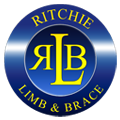Whether you are beginning the process of getting your first prosthesis or replacing a previous device, the process can be exciting, but also scary or frustrating. Regardless of where you are in your journey, this will be another step toward discovering your new normal after limb loss or limb difference. It is important to make an informed decision about whether a prosthesis (or what kind of prosthesis) will be the right choice for you. Below, we have answered some common questions you may have.
FAQ's
A prosthesis is simply a tool. It is an artificial replacement for a missing limb or part of a limb that can help you regain independence after your amputation or if you are living with limb loss. Choosing to use (or not use) a prosthesis depends on your personal goals. The best prosthesis is one that will help you reach your goals and live the life you’d like to live.
A prosthesis can range widely in price and will depend on your amputation level and the type of device that is best suited to you and your individual needs. Typically, your prosthetic device will be partially covered by your insurance plan. Some insurance plans may even cover the entire cost of the device. You will need to work closely with your insurance company to understand the types of devices and services that will be covered under your policy.
Fitting can begin as soon as surgical wounds are healed, normally within 6 to 8 weeks of amputation. From that point forward, initial fitting and training may take 2 weeks.
The process of being fit for your prosthesis will involve several visits to create a device that fits you and your needs. Some amputations can be more challenging to fit correctly and may require multiple fittings. Remember, your prosthetist doesn’t restore your limb but rather replaces it with a prosthesis. Even when fitted properly, it takes some time to get used to the sensation of taking weight through your residual limb.
Depending on your age, activity level, and growth, the prosthesis can last anywhere from several months to several years. In the early stages after limb loss, many changes occur in the residual limb that can lead to the shrinking of the limb. This may require socket changes, new liners, or even a different device.
Work through the feelings and emotions you are experiencing and decide how to approach your life after an amputation. Remember that everyone responds differently to the loss of a limb or being born with a limb difference. Don’t be afraid to look into visiting with an amputee peer, attending an Amputee Support Group, or working with a counselor or Psychologist, as these are all normal ways of coping with such a major life change.

